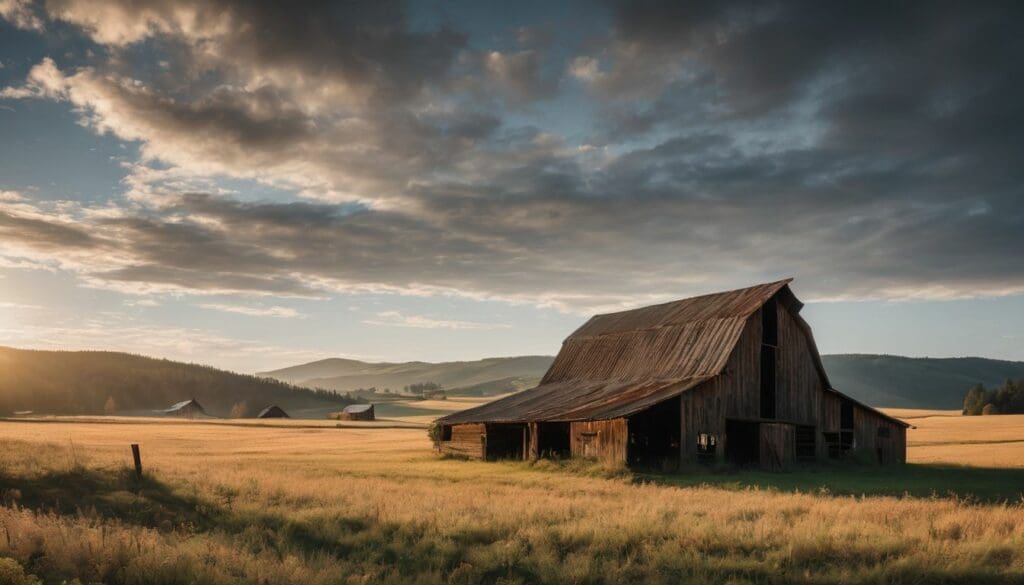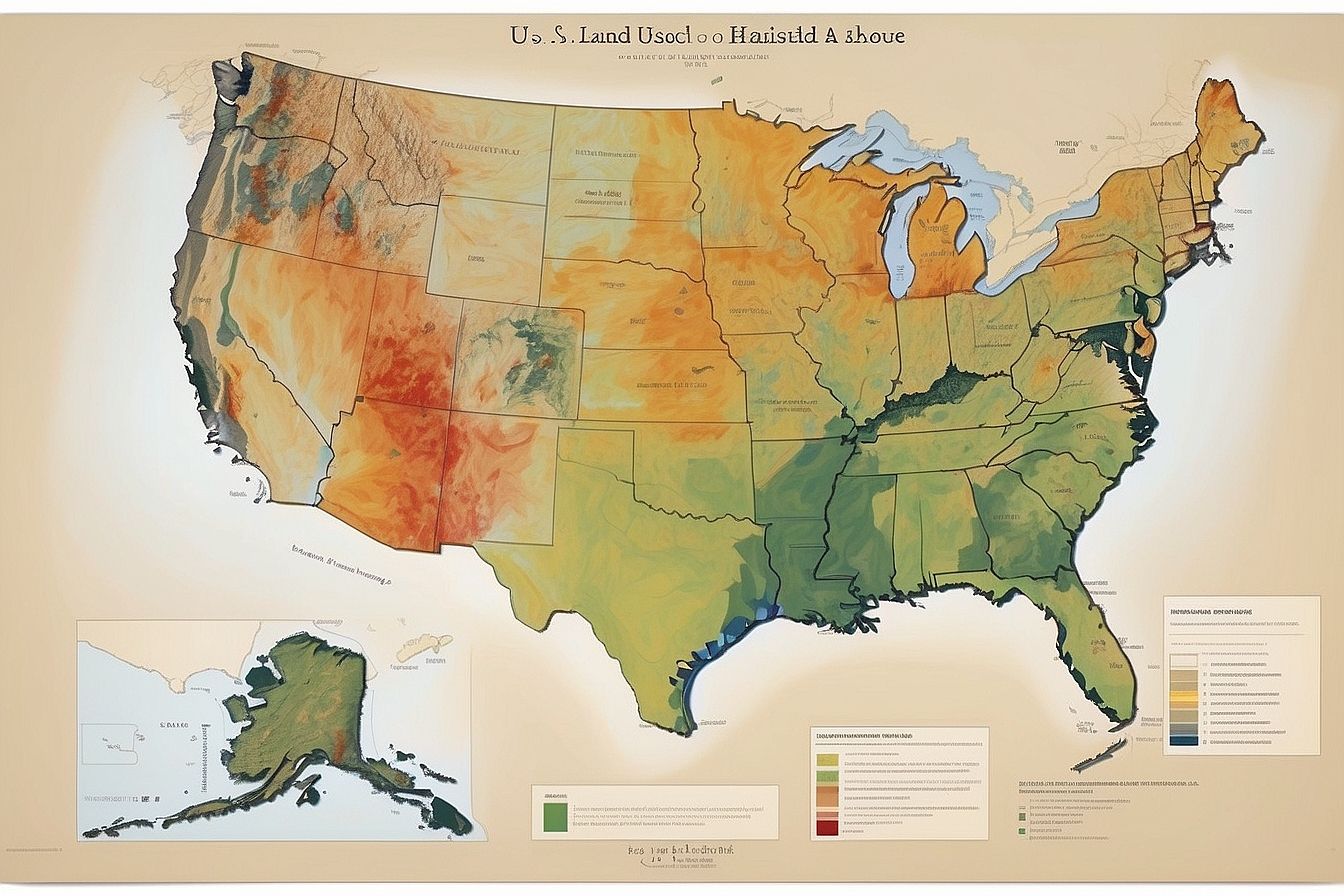Across our green and pleasant lands, the familiar contours of rural life are gradually diminishing. Like many kindred spirits who hold these areas dear, we’ve observed this decline with heavy hearts.
In just the past twenty years, a staggering 30% of untouched countryside has been surrendered to the relentless march of urban sprawl. Our foray into extensive research has equipped us with precious insights that pave a path forward in this pressing challenge.
We’re eager to share strategies designed not only to preserve the pastoral beauty we so cherish but also to reinvigorate the communities that are the lifeblood of these landscapes.
Together, let’s embark on a journey to ensure our rural heartlands remain vibrant and full of vitality – ensuring that such splendid vistas aren’t relegated merely to photographs or distant memories; read on for more!
Key Takeaways
- Urban expansion and modern farming practices are primary causes of the decline in rural landscapes, with recent decades showing a 30% reduction in untouched countryside.
- Rural community lives and economies struggle as young people move to cities, large – scale farms take over, and climate change affects stable conditions for agriculture.
- Preserving rural areas involves buying local produce, participating in conservation efforts, supporting sustainable tourism, advocating for protective policies, and joining environmental groups.
The Vanishing Rural Landscape
The decline of rural landscapes is a growing concern, with causes ranging from depopulation to agricultural industrialisation. This has significant impacts on communities and the environment, prompting efforts to preserve these areas through conservation and sustainable development.
Causes of the decline
We’re seeing the rural landscape fade away like a cherished old photograph. Its decline is reshaping communities and the environment in profound ways.
- Urban expansion relentlessly consumes agricultural lands, leaving less space for the rustic settings we treasure.
- New technologies often reduce the number of workers needed on farms, leading to rural depopulation.
- Young people frequently leave their countryside homes in search of better opportunities in cities, weakening rural economies.
- Farming practices have evolved; large – scale operations often replace the patchwork of small family farms that once defined much of the rural economy.
- Global market pressures mean local farmers struggle to compete, which can lead to abandoning farmlands.
- Government policies sometimes fail to adequately support rural development or farmland preservation.
- There’s a growing disconnection between people and the source of their food, diminishing public interest in the agricultural landscape.
- Climate change impacts, such as altered weather patterns and extreme events, hit hard on farming communities reliant on stable natural conditions.
Impact on communities
The decline of rural landscapes has a profound impact on communities, affecting their livelihoods and overall well-being. As countryside conservation efforts struggle to keep up with the rapid urbanisation, residents witness the loss of agricultural land, natural habitats, and open spaces.
This not only diminishes the scenic beauty that many cherish but also threatens local economies that rely on agriculture and tourism in these areas.
Moreover, the disappearance of the rural environment contributes to declining opportunities for outdoor activities such as hiking, camping, and birdwatching. These losses affect the health and quality of life of individuals who depend on these spaces for relaxation and recreation.
Efforts to preserve rural areas
Efforts to preserve rural areas are crucial in safeguarding the natural beauty and cultural heritage of our countryside. Here are some initiatives being undertaken:
- Supporting local agriculture by buying from farmers’ markets and organic co – ops.
- Participating in community clean – up events and promoting waste reduction efforts.
- Encouraging sustainable tourism by visiting eco-friendly destinations and supporting responsible travel practices.
- Advocating for policies that protect rural landscapes, such as land use zoning regulations and conservation easements.
- Joining or volunteering with environmental organisations dedicated to preserving rural areas.
Conclusion
As we reflect on the vanishing rural landscape, it is clear that urgent action is needed. Communities must come together to address the causes of decline and work towards sustainable solutions.
Preserving these areas not only benefits the environment but also ensures the survival of cherished rural communities. It’s up to each of us to play a part in protecting and nurturing our rural countryside for generations to come.
FAQs
1. What does “The Vanishing Rural Landscape” mean?
“The Vanishing Rural Landscape” refers to the disappearing aspects of the rural countryside, often due to changes in land use and a decline in rural sustainability.
2. Why is sketching techniques important for capturing the rural landscape?
Sketching techniques help artists create accurate composition drawings that capture the essence and beauty of the rural countryside effectively.
3. Can I learn how to draw landscapes from an instruction book?
Yes, an instruction book can offer valuable art instructions on drawing techniques and guide you through creating final sketches of landscapes like those found in the American Southwest.
4. How does landscape drawing contribute to preserving rural areas?
Landscape drawing raises awareness about the beauty and importance of preserving our rural areas by illustrating their unique characteristics before they change or vanish completely.
5. What are composition drawings and why are they significant in art?
Composition drawings are artistic creations where elements are arranged thoughtfully within a piece; they’re significant as they determine how well a work conveys its intended message or aesthetic appeal, especially when depicting scenes like The Vanishing Rural Landscape.





